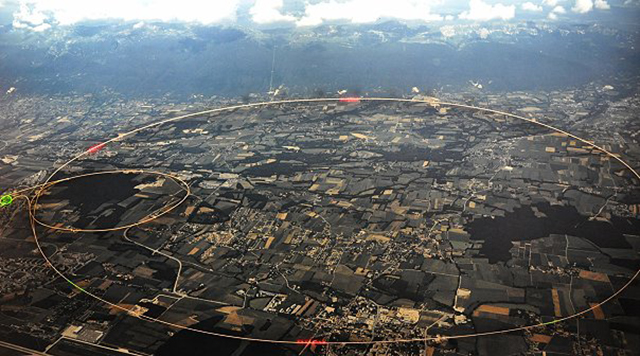
With a larger tunnel, you don't have to have magnets that are nearly as strong to keep the protons curving around the circumference to get to the 50TeV speeds CERN is thinking about.

So, you could get a larger tunnel for the same price as you would by digging around Geneva. The SSC site is great because almost all the tunneling goes through chalk, which is very easy to dig through. The cost of building and running a collider comes primarily from three factors: the cost of digging the tunnels the cost of building all the superconducting magnets and the cost of cooling the whole thing with liquid helium. AdvertisementĪmazingly, the physicists argue that this makes economic sense. The new collider would start at the SSC site south of Dallas and encircle the entire city. Instead, they'd be brought up to speed and then transferred to an even bigger collider, one 270km in circumference. They'd also accelerate protons to high energies in a second accelerator that goes through the same tunnels as the electron-positron collider. But the authors seem confident that a collider of this size can hold electrons at the requisite energies for producing the Higgs.īut that's not the audacious part of their plan. When not feeding the collider, the linear accelerator could act like the one at SLAC, using the electrons to generate X-rays for imaging molecules.Įlectrons normally lose too much energy while travelling around a curved path (which is why we are likely to build a linear collider). By finishing off the tunnel, the authors argue, an electron-positron collider could be built that would be able to generate the Higgs in abundance, allowing its detailed study. About 45 percent of its 87km circumference had already been dug by that point, along with a tunnel for a linear accelerator to feed ions into it. The secret is going back to Texas, where construction of the SSC was well underway when the funding rug got pulled out from underneath it.

And, while you're at it, skip building the linear collider as well. The US team would advise getting away from the mountains altogether. For now, however, the Future Circular Colliders project will remain in the study phase. Even so, part of the tunnel will have to go under the lake itself (though, presumably, a more shallow section).Įven so, extremely powerful superconducting magnets will be needed to keep the protons flying at 50 Tera-electronVolts, making for 100TeV collisions the LHC will max out at 14TeV, so this is a substantial increase in energy. Drilling through the Alps could get prohibitively expensive, so the tunnels CERN is looking at encircle Geneva and spill out into France's Rhone valley-away from the Alps. The valley it sits in is flanked by very large mountains and contains a rather deep lake. Potentially in response, a team of US-based physicists have come up with an even more audacious plan: don't build the linear collider, resurrect the SSC's now abandoned tunnels, and use them to both host a Higgs factory and as a booster for a truly massive, 270km collider.ĬERN would happily build the biggest tunnel it can, but it is limited by a different sort of physics.

Earlier this year, CERN announced that it was beginning to evaluate an LHC replacement that would require a tunnel so large-100km in circumference-that it would have to pass under Lake Geneva itself.

Now, decisions on the linear collider that will be used to study the Higgs in detail are being made based on which country is likely to come up with the most money.īut physicists are apparently an optimistic bunch. The US cancelled the construction of hardware that would have outperformed the LHC (the Superconducting Super Collider, or SSC) due to cost overruns, and it shut down its Tevatron once the LHC started up. To save costs, the LHC was built in an existing tunnel that had hosted an earlier, less powerful accelerator. Will particle physicists ever have a new toy that will take them to energies beyond those accessible through the Large Hadron Collider? History suggests it's unlikely. Blue lines represent the two planned accelerator loops, one of which neatly encircles Dallas. In this case, it represents rock that's easy to drill through.


 0 kommentar(er)
0 kommentar(er)
